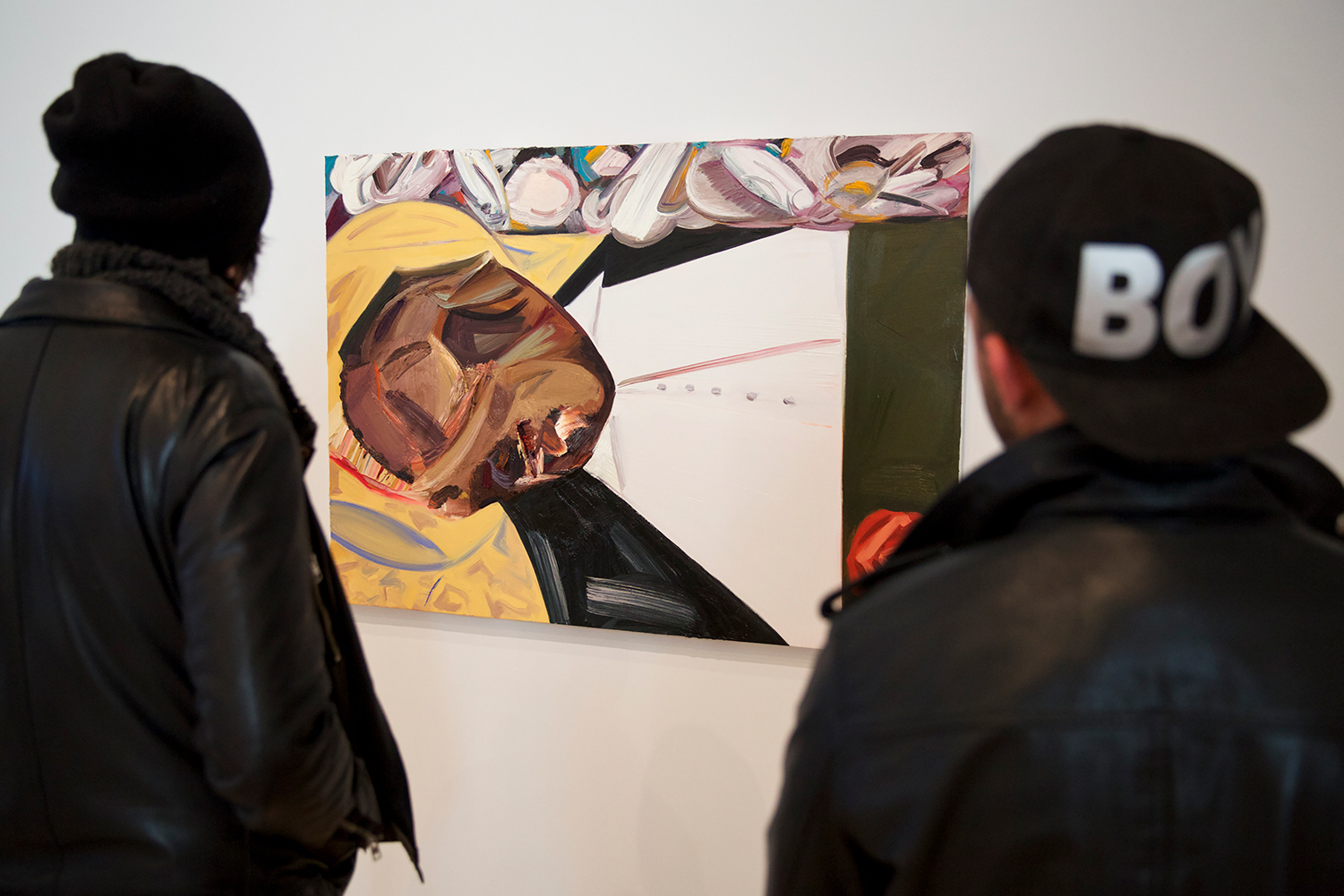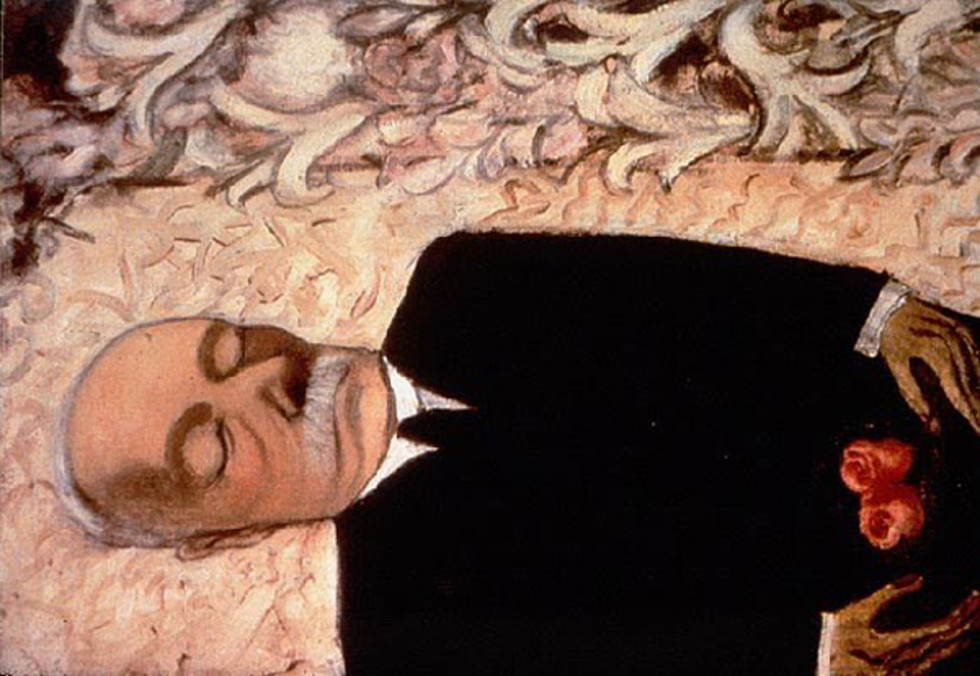In this post, Sara Aronowitz and Grace Helton discuss the article they recently published in Ergo. The full-length version of their article can be found here.

When you watch a movie, where do you experience yourself as located? And who do you imagine yourself to be? The answers to these questions might seem obvious. You experience yourself as located in the movie theatre, reclining in a velvet-covered chair, your legs sprawled under the chair in front of you, your hand clutching some popcorn. And the person you imagine yourself to be is, well, you, the same person you always are, one who happens to be watching a film.
Some aspects of film experience suggest these answers to be incorrect. In at least some cases, viewers seem to imagine themselves to be located in the world of the film. Consider the opening sequence of Us (2019), in which a young girl attending a carnival wanders off by herself into a poorly lit, seemingly abandoned funhouse. Unable to find her way out, the girl descends further and further into the strange space, occasionally confronted by spooky animatronic figures or by her own distorted image reflected in half-hidden mirrors. As viewers, we might feel as though we too are there, in that claustrophobic space, disoriented and unsettled by it.
Or, think of the famous shower scene in Psycho (1960), in which you view the killer through a mist of water, about to deliver blows to his victim Marion Crane. This might create a sense that you are endangered. Thus, you might clutch your seat, feel your heart race, or even raise your hands briefly in a defensive gesture, as though to protect your own body from the onslaught. Examples such as these suggest that viewers sometimes imagine themselves to be embodied in the world of the film.
But other considerations push back against the suggestion that in viewing a film, you imagine yourself to be embodied within that world. Suppose, for instance, that in watching the opening sequence of Us, you imagine yourself in the world of the film. In doing this, you must further represent yourself as an invisible element of the narrative, a shadow character who is for some reason unseen by the young girl. For, consider that the girl lost in the funhouse doesn’t acknowledge the presence of anyone who might help her. It would be very odd to build yourself into the narrative in this way, as an additional, inefficacious element.
This paradox of film, wherein film can engender a powerful sense of felt presence at the same time that film typically requires that the viewer remain at a kind of distance, undergirds several competing views of film experience. In our recent paper, ‘‘Subjectivity in Film: Mine, Yours, and No One’s’’, we develop a new theory of film experience, one which aims to solve both this traditional puzzle and two new puzzles.
Our theory is pluralistic: we think different film sequences mandate different points of view, and sometimes, they mandate no point of view at all. Put otherwise: in some cases, film experience involves the representation of a kind of subjectively presented perspective, one that is ‘from the inside.’ In other cases, film experience mandates an impersonal presentation of the world. For instance, establishing shots, wide shots which depict a scene’s broader environmental context, typically involve an impersonal presentation.
But back to the subjective cases. In some of these cases, a perspective is indexed to one of the film’s characters, and in some cases, this perspective is indexed to you, the viewer. But, we maintain, in still other cases, this perspective is indexed to no one at all. This view helps to resolve the decades-old puzzle about how films can, sometimes via the same sequence, engender both a sense of here-ness and a sense of distance. Films do this via integrated sensory and emotional cues which together ground complex perspectives or what we call subjectivities. These subjectivities are presented ‘from the inside’ but are at least sometimes indexed to no one at all.
We argue that the view that film sometimes mandates the representation of an unindexed subjectivity can help solve two new puzzles about film. The first puzzle concerns perspective divergence, which occurs when a film sequence suggests that a certain spot both is and is not occupied by a viewer. For instance, in a sequence from Caro Diario (1993), we view the main character riding on a Vespa. Our vantage point is from some distance directly behind the main character, and the camera shakes, as though it is mounted on a moving vehicle. At one point, a pedestrian looks directly into the camera, as though acknowledging someone’s presence. Together, these cues suggest the presence of someone behind the protagonist, but the narrative of the film makes it implausible that anyone follows this character during this period. We argue that in sequences such as this one, viewers represent a perspective, or a ‘subjectivity,’ that is indexed neither to a character in the film, nor to the viewer herself, but to no one at all.

The second puzzle concerns what we call post facto point-of-view sequences. These are point-of-view sequences which are disclosed to be point-of-view sequences only after the presentation of the relevant sequence. For instance, in one sequence from Portrait of a Lady on Fire (2019), we see the protagonist Héloïse through the flickering flames of a bonfire. She slowly walks a short distance before pausing, gazing in what seems to be the direction of the viewer. The hem of her dress catches fire, which she doesn’t notice. It gradually dawns on us that the vantage point from which we see Héloïse is her companion Marianne’s perspective and has been all along; this is why the gaze is so fixed, so unmoving from Héloïse, even after her dress catches fire, and why Héloïse’s gaze returns so unwaveringly. It is the gaze of someone transfixed by Héloïse as an object of desire and who in turn transfixes Héloïse.
We argue that in sequences such as this one, viewers initially represent a perspective, or a ‘subjectivity,’ that is indexed neither to a character in the film nor to the viewer herself, but to no one at all. Only later do viewers represent this perspective as a particular character’s (such as Marianne’s).
Want more?
Read the full article at https://journals.publishing.umich.edu/ergo/article/id/5707/.
About the authors
Sara Aronowitz studies learning and memory. She’s an assistant professor at the University of Toronto.

Grace Helton is a philosopher of cognitive science and epistemology. She’s currently writing a book on the emotions, with a special emphasis on grief, PTSD, and awe. She’ll be joining the University of Rochester in July of 2025.






